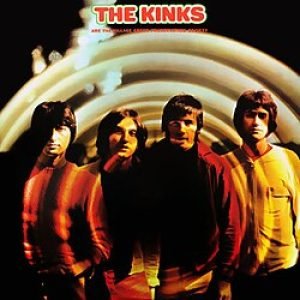Released in late 1968, The Kinks Are the Village Green Preservation Society stands as a turning point in the Kinks’ career. At a time when many rock bands were pushing toward louder, more experimental sounds, the Kinks chose a quieter, more introspective path. Known earlier for gritty hits like “You Really Got Me,” they took a sharp turn with this album, trading distortion for delicate melodies and biting satire for warm, nostalgic storytelling.
This album didn’t just mark a musical shift. It revealed frontman Ray Davies’s growing interest in capturing the fading charm of English life. Rather than chase global trends, Davies looked inward and backward, building a collection of songs that reflect on small-town values, old customs, and the emotional pull of memory. He later described the project as deeply personal, shaped by his desire to honor the past while subtly questioning the pace of change in modern life.
From start to finish, the album paints scenes of everyday life with humor and heart. Musically, it leans on gentle folk, classic pop, and touches of old British music hall, creating a sound that feels both timeless and rooted in a specific place. This was the first album Davies produced entirely on his own, and every song was penned by him. It’s clear that Village Green wasn’t made to chase charts—it was made to preserve a feeling, a time, and a worldview.
Sonic Exploration

The Kinks Are the Village Green Preservation Society may not boast the glossy production of some of its late-sixties peers, but its sound is rich with purpose. The album has a clean, uncluttered mix that places emphasis on melody and storytelling over studio trickery. Everything feels intentional. The slightly dry, close-mic’d quality gives the record a cozy, homespun texture. It mirrors the album’s themes of familiarity and domestic life—like listening to stories told in a warm kitchen rather than a crowded concert hall.
Ray Davies took full control behind the mixing desk, and the result is a set of songs that are finely tuned without sounding overworked. The production doesn’t aim to dazzle. Instead, it invites you to lean in and listen closely. You hear every strum, every harpsichord flourish, and every vocal quirk. That attention to space and detail helps the songs breathe and allows the characters in each track to come alive with greater intimacy.
Instrumentally, the arrangements are full of charm and subtle variety. Acoustic guitars lay the foundation, often joined by piano, Mellotron, and occasional bursts of brass or harmonica. The use of the harpsichord adds a baroque flavor to tracks like “Village Green,” while the gentle harmonies on “Picture Book” bring a light, sing-along feel that balances the bittersweet lyrics. Vocally, Davies delivers his lines with a mix of tenderness and theatrical flair, giving each song its own personality without ever losing the thread of the album’s cohesive mood.
Genre Elements
Genre-wise, the album mostly stays within the bounds of British pop and folk rock, but it draws in elements from older traditions. Music hall influences surface in tracks like “People Take Pictures of Each Other,” lending a playful, old-world vibe. There’s also a noticeable touch of chamber pop, with arrangements that feel ornate without being overwhelming. Rather than chase the psychedelic storm brewing elsewhere in 1968, the Kinks created a softer kind of counterculture—one rooted in reflection rather than rebellion.
Lyrical Analysis

At the heart of The Kinks Are the Village Green Preservation Society lies a deep affection for the past, mixed with a gentle sadness about its disappearance. Ray Davies crafts lyrics that focus on memory, nostalgia, and the quiet dignity of ordinary life. Rather than aim for grand political statements, the album explores the personal and emotional cost of progress. It’s not anti-modern, exactly—but it does question what we lose in the rush to modernize.
Many of the songs reflect a longing for a simpler world. The title track sets the tone with a tongue-in-cheek list of things worth preserving, from “Donald Duck” to “vaudeville.” It’s humorous on the surface, but beneath the wit is a sincere plea to hold on to traditions that give life its texture. “Do You Remember Walter?” mourns a lost friendship and the way people change with time. “Picture Book” captures the bittersweet feeling of looking through old photos, where smiles hide forgotten disappointments.
Throughout the album, recurring themes of time, change, and memory create a unified narrative. Each song feels like a snapshot—often whimsical, sometimes melancholic—of a person, place, or moment. Characters drift in and out: a lonely animal lover, a former war hero, a village gossip. These stories are grounded in everyday life, yet they tap into universal emotions that still resonate today.
Lyrical Depth
Lyrically, Davies leans toward a straightforward, narrative style. His verses are clear and easy to follow, but they’re rich with small details and clever wordplay. He avoids abstraction in favor of character-driven storytelling, which gives the songs an emotional immediacy. You don’t need to decode the lyrics to feel their impact. Whether he’s singing about old friends or fading communities, there’s always a sense of warmth, regret, and deep empathy.
Cohesion and Flow

One of the most striking qualities of The Kinks Are the Village Green Preservation Society is how well it holds together as a unified work. Despite its variety in tempo, tone, and character focus, the album plays like a thoughtfully curated scrapbook. Each track feels like a new page, yet all contribute to a larger portrait of nostalgia, loss, and the quiet beauty of everyday life.
The sequencing is careful and deliberate. The title track opens with a clear mission statement, introducing the album’s dedication to preservation and tradition. From there, the songs gently shift between moods—playful, wistful, ironic, tender—without ever feeling disjointed. “Do You Remember Walter?” flows naturally into “Picture Book,” moving from personal reflection to shared memories. “Johnny Thunder” and “Last of the Steam-Powered Trains” keep the pace lively while staying rooted in character-driven narratives.
There’s no strict plot to follow, but there is an emotional arc. As the album progresses, the tone grows more reflective. By the time we reach tracks like “Village Green” and “People Take Pictures of Each Other,” there’s a deep sense of longing. These songs revisit earlier ideas with more emotional weight, making the closing moments feel earned rather than abrupt.
Thematically, the album remains remarkably consistent. Whether Davies is singing about fading friendships, quirky townsfolk, or old photographs, his lens stays focused on memory and meaning. Even the lighter songs carry a subtle undercurrent of loss or change. Stylistically, the sound never strays too far from its core mix of folk-pop and English music hall, helping the album feel like a complete, intentional work rather than a collection of stray ideas.
Standout Tracks and Moments
While The Kinks Are the Village Green Preservation Society is best appreciated as a whole, several tracks rise above for their emotional power, cleverness, or sonic character. These standout moments not only define the album’s tone but also showcase Ray Davies’s range as a songwriter and storyteller.
“Village Green” is perhaps the emotional core of the record. Though modest in arrangement, with its harpsichord-led melody and gentle rhythm, it captures the album’s wistful longing in just under three minutes. The lyrics speak to a lost world—the village green that once was—and reflect a deeply personal sense of change. It’s a quiet lament, subtle but profound.
“Picture Book” brings a burst of energy, driven by a buoyant guitar riff and an infectious chorus. On the surface, it’s cheerful and bright, but there’s a melancholy just beneath. The idea of flipping through old photos reveals the emotional contrast between joyful memories and the passage of time.
“Do You Remember Walter?” stands out for its narrative sharpness. The song revisits a childhood friend and contrasts shared dreams with the dull reality of adulthood. There’s no bitterness in the delivery, only quiet resignation.
“Big Sky” shifts the perspective. Here, Davies zooms out, reflecting on a larger, indifferent universe. The instrumentation is more expansive, with reverb-drenched guitar and a strong rhythm section. It’s one of the few moments where the album steps away from its small-town lens, and the contrast gives the track a unique edge.
“People Take Pictures of Each Other” begins with a playful tone and ends with a surprising sense of reflection. Davies uses photography as a metaphor for memory and the human urge to freeze time, closing the album on a note of philosophical resignation that lingers well after it ends.
Artistic Contribution and Innovation

When The Kinks Are the Village Green Preservation Society was released, it quietly stood in contrast to nearly everything else happening in popular music. Rather than embracing the loud, sprawling energy of the late ’60s, the Kinks delivered something softer and more intimate. In doing so, they redefined what it meant to make a concept album.
This record didn’t rely on technological wizardry or genre fusion. Instead, its innovation came from tone, perspective, and structure. Davies offered a personal vision of England, filtered through memory and imagination. He created a fully realized world, where small stakes felt profound. The focus on everyday people and overlooked beauty set the album apart—and influenced future generations of storytellers in music.
Its impact on British pop and indie music is undeniable. Bands in the Britpop movement, as well as contemporary songwriters drawn to character-driven narratives, have often cited Village Green as a key influence. It helped prove that an album didn’t have to be loud to be powerful, or grand to be ambitious.
Closing Thoughts

The Kinks Are the Village Green Preservation Society is not just a standout in the Kinks’ catalog—it’s a rare gem in the history of popular music. Its strength lies in its quiet conviction. Ray Davies crafted an album that celebrates small moments, fading traditions, and the emotional weight of memory with elegance and wit. It avoids the grand gestures of its era and instead offers a deeply personal, lovingly detailed world that rewards careful listening.
Among its many strengths are its lyrical storytelling, cohesive themes, and thoughtful production. The songwriting is rich in character and charm, and the album’s pacing is steady and deliberate, allowing each track to contribute meaningfully to the whole. It feels less like a collection of songs and more like a lived-in village—a place the listener is invited to visit and revisit.
There are minor limitations. Some listeners may find the tone too restrained or the production too modest, especially when compared to the more explosive records of the late ’60s. It’s not an album that demands attention on first play—it asks for patience. But for those who give it time, the emotional depth and artistic intention become clear.
In the context of the Kinks’ career, Village Green stands as Ray Davies’s most focused and emotionally resonant statement. It didn’t top charts, but it set a new bar for concept albums built on intimacy rather than spectacle. Over the decades, it has earned its place as a quiet cornerstone of British rock and a blueprint for thoughtful, narrative-driven pop.
Official Rating: 9/10
This rating reflects the album’s artistic strength, emotional richness, and lasting influence. While not flawless, it’s a near-perfect example of vision executed with care and integrity. Its soft-spoken charm continues to echo long after the final note fades.
